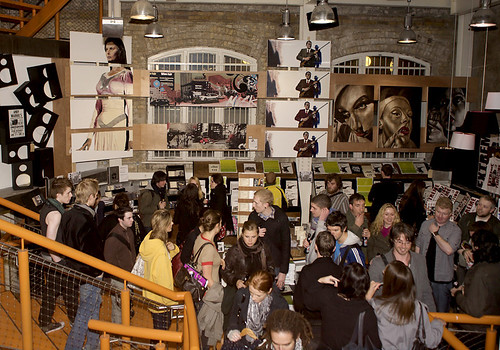Introductory Points
- Hyperreality is embodied in simulacra which takes centre stage on the modern high street
- Simulacra drives the high street and people's desire for commodities
- Hyperreality exists on the high street outside of simulacra also though, in more subtle ways such as the way it is communicated to the consumer (such as the shopping experience itself)
- Sign values reign on the high street
- Oligopolies are masked behind a friendly high street facade that presents them as community resources
Baudrillard, J (1970), 'The Consumer Society', London, SAGE
A good insight into the overall situation of how the modern consumer submits to hyperreality
P64
- Sign Exchange Value operating, not a use value
- Hyperreal ethics- a belief in a statement of values
Baudrillard, J (1994), 'Simulacra and Simulation', Michigan, University of Michigan
Further analysis of hyperreality and how it is embodied in commodified products
Debord, G (1967), 'The Society of the Spectacle', New York, Zone Books
Guy Debord's take on how society revolves not around each other, but around the hyperreality associated with products
Observations regarding American Apparel
P12
Observations regarding American Apparel
P12
- An immense accumulation of spectacles
- Operates on the basis of images & signs
Eco, U (1986), 'Travels in Hyperreality', London, Pan Books Ltd
Umberto Eco looking at the progression of hyperreality and how it has risen in importance in relation to the rise of capitalism
The Hyperreal Environment: Abercrombie & Fitch
- Dark shop, coloured lights, loud music, employed dancers- resembles a club that puts the mind into a hyperreal gear. The reality is that the 'party goer' is a consumer, spending real money.
- Upper Right: Queueing to get into Abercrombie and Fitch, London
Marshall McLuhan talking about communication and how hyperreality exists within that; 'the medium is the message'
 Right: An image of a student lockdown in Urban Outfitters, where art from local colleges is displayed giving the feeling of a community hub. Students buy into the hyperreality by thinking they are at a sort of party when actually they might as well be in Primark or Tesco at the end of the day.
Right: An image of a student lockdown in Urban Outfitters, where art from local colleges is displayed giving the feeling of a community hub. Students buy into the hyperreality by thinking they are at a sort of party when actually they might as well be in Primark or Tesco at the end of the day.Observations regarding Urban Outfitters
- The medium is the message (Mcluhan, 1964) can be applied to:
- UO's use of Facebook as a 'friend'
- UO's student lockdowns; 'parties'
- UO's art & music events, that appear to put them onto the same level as a gallery or cutting-edge music venue
- Independent music played in store
- All these things add up to result in a pseudo-individualism (Adorno, 1941) in the consumer
Observations regarding Adidas Originals
Baudrillard, J, 1983, 'Simulations', P96, unknown, USA
- Objects become undefined simulacra one of the other
- Origin no longer a concern
- Never need to be counterfeited (although sign exchange value means they are)
The intricacies taking place here can be partly summed up by the thoughts of Debord, who states that 'we live our lives through watching the lives of others, so our lives become these lives we watch- a false life.' (Debord, 1967). He elaborates; 'the loss of quality is so obvious at every level, from the objects it lauds to the behaviour it regulates merely echoes the basic traits of a real production process that shuns reality. The commodity form is characterised exclusively by self equivalence- it is exclusively quantative in nature. The quantative is what it develops and it can only develop within the quantative.' (Debord, 1967)
In other words, once we enter into the inevitable life of observing others, we become psychologically imprisoned;locked into a cycle where 'tastes' (that are mostly false), can only develop within themselves- it s the fashion that sets trends and we live at the pace of objects (Baudrillard, 1970).
Other interesting bits in 'The Consumer Society'- potential tangents though.
- P49 Happiness has to be measurable; IKEA- 'Happiness Inside'
- P64 advertising draws on relations to others' American Apparel ads


